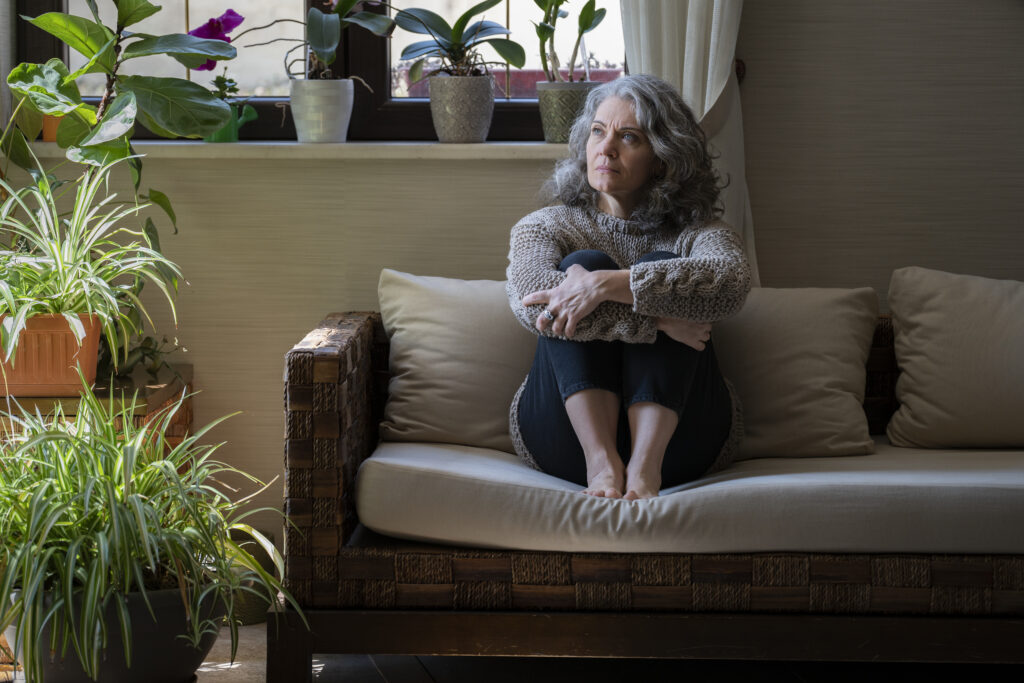Elderly Suicide Prevention: Combatting Loneliness and Isolation
Elderly Suicide Prevention: Combatting Loneliness and Isolation
Read Disclaimer
Discover actionable strategies for elderly suicide prevention, including addressing loneliness and social isolation among seniors. Learn about risk factors, warning signs, and ways to promote connection and resilience in later life.
Introduction:
The aging population presents unique challenges, and among them is the pressing issue of elderly suicide. As seniors navigate the later stages of life, they often encounter profound feelings of loneliness and social isolation, which can significantly impact their mental health and well-being. This comprehensive blog aims to delve deeply into the complexities of elderly suicide prevention, exploring the root causes of loneliness among seniors, identifying risk factors for suicide, and offering actionable strategies to promote connection, resilience, and overall well-being in later life.
Understanding Elderly Suicide Prevention:
1. The Silent Epidemic of Elderly Suicide :
While suicide among older adults may receive less attention than other age groups, it is a growing public health concern. Factors such as chronic illness, loss of independence, and social isolation contribute to the heightened vulnerability of seniors to suicide.
2. The Impact of Loneliness and Isolation :
Loneliness is not just a passing emotion but a pervasive state of social disconnectedness that can have profound consequences for mental and physical health. For many older adults, the absence of meaningful social connections exacerbates feelings of despair and hopelessness, increasing the risk of suicidal thoughts and behaviors.
3. Identifying Risk Factors :
To effectively prevent elderly suicide, it is crucial to recognize the multitude of risk factors that contribute to vulnerability among seniors. These may include bereavement, chronic illness, financial strain, mobility limitations, and a lack of social support. Understanding these risk factors is essential for developing targeted interventions to mitigate risk and promote well-being.

4. Breaking the Stigma of Mental Health :
Stigma surrounding mental illness remains a significant barrier to help-seeking among older adults. Efforts to destigmatize conversations around mental health and provide culturally sensitive support are essential to ensure that seniors feel comfortable seeking help when needed.
5. Empowering Communities to Act :
Suicide prevention efforts must extend beyond clinical settings to encompass community-based interventions. By engaging community organizations, faith-based groups, and volunteers in outreach initiatives, supportive networks can be created to combat social isolation and provide meaningful connections for older adults.
Strategies for Elderly Suicide Prevention:
1. Promoting Social Engagement :
Encouraging participation in community activities, senior centers, and volunteer programs is crucial for fostering social connections among older adults. Providing transportation and accessibility accommodations can help ensure that seniors with mobility limitations can participate.
2. Facilitating Peer Support Networks :
Establishing peer support groups and buddy systems enables seniors to connect with others who share similar experiences, providing valuable empathy, understanding, and companionship.
3. Enhancing Access to Mental Health Services :
Improving access to mental health services tailored to the needs of older adults, such as geriatric psychiatry, counseling, and teletherapy, is essential for ensuring timely intervention and support for those in distress.
4. Addressing Structural Barriers :
Systemic issues such as ageism, poverty, and inadequate healthcare access must be addressed to promote equity and reduce disparities in mental health outcomes among the elderly.
5. Educating Caregivers and Families :
Providing education and training for caregivers and family members on recognizing signs of distress, initiating conversations about mental health, and connecting older adults with appropriate support services empowers them to play a proactive role in suicide prevention.
Conclusion:
In conclusion, addressing the issue of elderly suicide prevention requires a concerted effort from individuals, communities, and policymakers alike. By understanding the root causes of loneliness and social isolation among seniors and implementing targeted interventions to foster connection and support, we can make significant strides in reducing the risk of suicide in this vulnerable population. It is imperative that we prioritize the mental health needs of our elderly population, break down barriers to accessing mental health services, and combat societal stigma surrounding aging and mental illness. Through community engagement, education, and advocacy, we can create a future where every older adult feels valued, connected, and empowered to seek help when needed. Let us work together to ensure that elderly suicide becomes a preventable tragedy of the past.
FAQs with Answers:
Q1: Why are older adults at risk of suicide?
A1: Older adults may be at risk due to factors such as chronic illness, loss of independence, social isolation, and untreated mental health conditions.
Q2: How prevalent is loneliness among seniors?
A2: Loneliness is a widespread issue among seniors, with studies indicating that a significant portion of older adults report feeling lonely or socially isolated.
Q3: What are some warning signs of suicide in elderly individuals?
A3: Warning signs may include expressing feelings of hopelessness, withdrawing from social activities, talking about death or suicide, and giving away possessions.
Q4: How can I help a lonely elderly loved one?
A4: Stay connected, listen nonjudgmentally, encourage participation in social activities, and help connect them with supportive resources and services.
Q5: Are there specific risk factors for suicide among elderly men and women?
A5: While both genders may experience similar risk factors, older men are more likely to die by suicide, while older women are more likely to attempt suicide.
Q6: How can communities support elderly suicide prevention efforts?
A6: Communities can support by promoting social engagement, offering accessible mental health services, providing transportation assistance, and fostering age-friendly environments.
Q7: Are there cultural considerations in addressing elderly suicide prevention?
A7: Yes, cultural beliefs and values may influence attitudes toward mental health and help-seeking behaviors among older adults, necessitating culturally sensitive approaches.
Q8: What role can family caregivers play in preventing suicide among older adults?
A8: Family caregivers can provide emotional support, monitor for warning signs, help manage medications, and facilitate access to mental health services.
Q9: Is it normal for older adults to feel lonely after retirement?
A9: It is common for older adults to experience a sense of loss or loneliness after retirement, as their social networks may change. However, persistent loneliness should be addressed and supported.
Q10: How can technology be used to combat loneliness among seniors?
A10: Technology can facilitate social connections through video calls, online communities, and social media platforms, helping seniors stay connected with loved ones and engage in meaningful activities.

Thank you for your sharing. I am worried that I lack creative ideas. It is your article that makes me full of hope. Thank you. But, I have a question, can you help me?
Your point of view caught my eye and was very interesting. Thanks. I have a question for you.
Thanks for sharing. I read many of your blog posts, cool, your blog is very good.
Thanks for sharing. I read many of your blog posts, cool, your blog is very good.
Your point of view caught my eye and was very interesting. Thanks. I have a question for you.
Can you be more specific about the content of your article? After reading it, I still have some doubts. Hope you can help me.
Thanks for sharing. I read many of your blog posts, cool, your blog is very good.
Your point of view caught my eye and was very interesting. Thanks. I have a question for you.
Your point of view caught my eye and was very interesting. Thanks. I have a question for you.
Thank you for your sharing. I am worried that I lack creative ideas. It is your article that makes me full of hope. Thank you. But, I have a question, can you help me?
Can you be more specific about the content of your article? After reading it, I still have some doubts. Hope you can help me.
Thanks for sharing. I read many of your blog posts, cool, your blog is very good.
Thank you, your article surprised me, there is such an excellent point of view. Thank you for sharing, I learned a lot. https://accounts.binance.com/sl/register-person?ref=P9L9FQKY
Thank you for your sharing. I am worried that I lack creative ideas. It is your article that makes me full of hope. Thank you. But, I have a question, can you help me?
Can you be more specific about the content of your article? After reading it, I still have some doubts. Hope you can help me.
Can you be more specific about the content of your enticle? After reading it, I still have some doubts. Hope you can help me.
Your article helped me a lot, is there any more related content? Thanks!
Thank you for your sharing. I am worried that I lack creative ideas. It is your article that makes me full of hope. Thank you. But, I have a question, can you help me?
Thank you for your sharing. I am worried that I lack creative ideas. It is your article that makes me full of hope. Thank you. But, I have a question, can you help me?
Can you be more specific about the content of your article? After reading it, I still have some doubts. Hope you can help me.
Can you be more specific about the content of your article? After reading it, I still have some doubts. Hope you can help me.
Your point of view caught my eye and was very interesting. Thanks. I have a question for you.
Thanks for sharing. I read many of your blog posts, cool, your blog is very good.